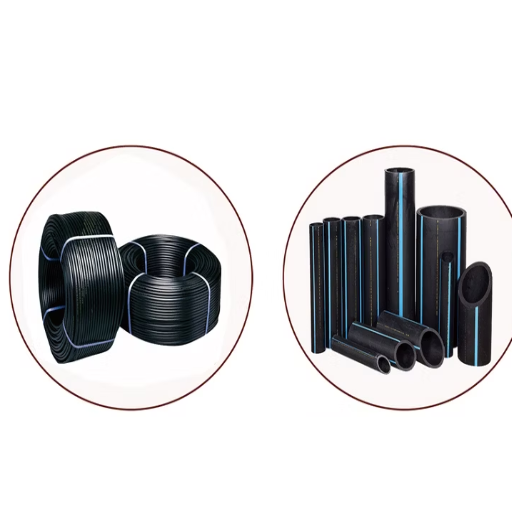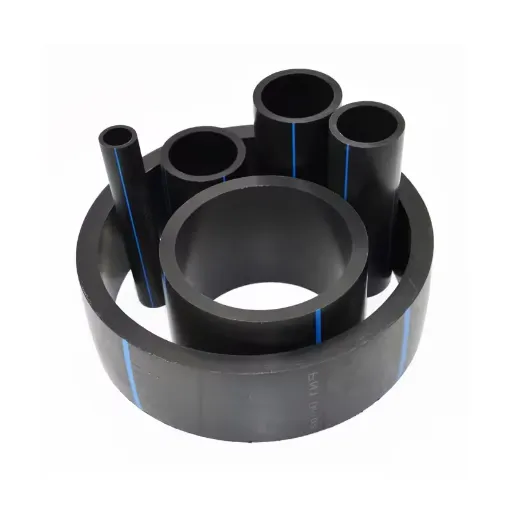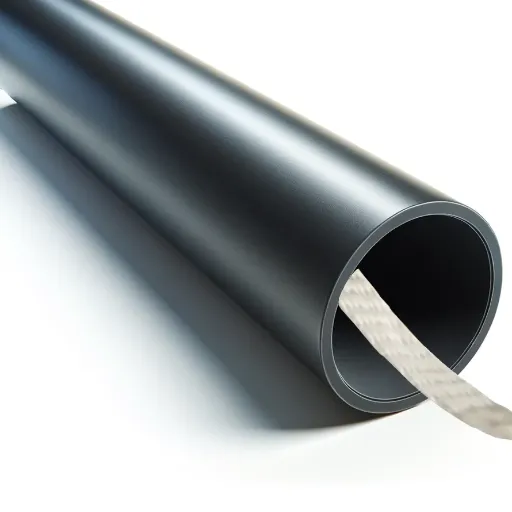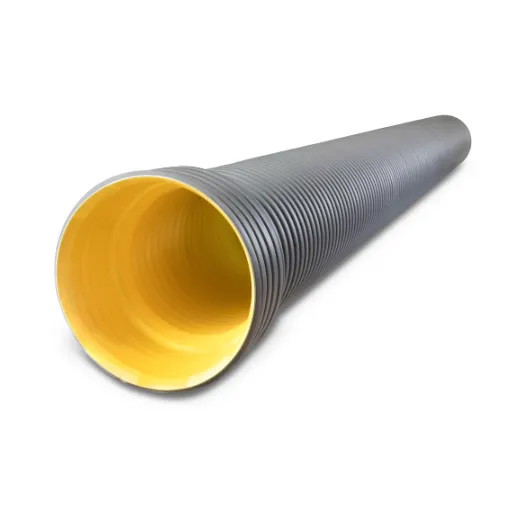High-density polyethylene (HDPE) pipes are an essential choice for various industries due to their durability, flexibility, and resistance to corrosion. One critical aspect of selecting the right HDPE pipe is understanding its wall thickness, which directly impacts its pressure rating, structural integrity, and application suitability. The IPS (Iron Pipe Size) system is a widely used standard that provides valuable insights into HDPE pipe dimensions and wall thickness measurements. This article explores 10 essential facts about HDPE pipe wall thickness as outlined in the IPS size chart, offering a comprehensive guide to help engineers, contractors, and decision-makers make informed choices tailored to their project requirements.
What factors determine HDPE pipe wall thickness?

How does pipe pressure rating affect wall thickness?
Pipe Pressure ratings impact the HDPE pipe wall thickness. To me, the wall thickness requires designing to resist the maximum internal load associated with the operational life of the pipe without breaching the pipe’s integrity. This correlation is outlined with the Standard Dimension Ratio (SDR), which defines the pipe’s outer diameter divided by its wall thickness. A low SDR value means a reduced ratio that exhibits a wall with the capacity to withstand greater pressures, and vice versa, where greater SDR shows a wall whose thickness will not withstand higher pressure differences.
- Pipes with an SDR of 11 are rated for water and are usable at pressures up to 200 PSI.
- Pipes with SDR 17 have lower rating and pass only about 125PSI, thus are used in less stressed applications.
These values must be matched with particular working conditions, including the type of fluid, temperature, and external load variables. Correcting the mismatch between SDR and pressure requirements must be managed if functional efficiency and service life of the pipe are to be sustained in field operations.
How does pipe diameter influence wall thickness?
The Standard Dimension Ratio lets pipes maintain their function regardless of size and also describes the relationship between pipe diameter and wall thickness. In order to keep the same SDR, the wall thickness increases in the same ratio as the pipe diameter.
The wall thickness increases at the same rate as the diameter in larger diameter pipes in order to support the SDR. To illustrate, the wall thickness of a SDR 11 pipe is roughly 1/11 of the outer diameter of the pipe. This allows for consistent pressure ratings and structural integrity.
- Pressure rating: pipes which support a higher amount of pressure, such as an SDR 11 which supports up to 200 psi, require thicker walls to maintain structural integrity.
- Material strength: The amount of tensile and elastic deformation directly affects the thickness of the wall.
- Operating conditions: added wall thickness may be needed for wider diameters due to temperature, type of fluid and external load.
Consideration of operating conditions alongside SDR standards guarantees optimal performance of pipes for engineers dealing with diverse applications.
What are the benefits of proper HDPE pipe wall thickness?
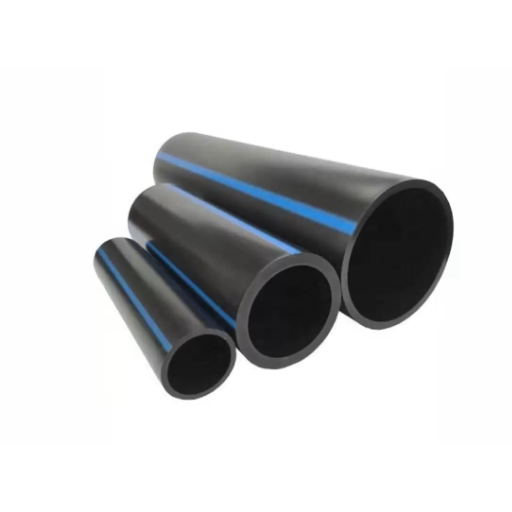
How does wall thickness impact pipe durability?
In terms of the long-term durability of HDPE pipes, wall thickness is a crucial determining parameter, because it influences the pipes’ ability to endure internal and external stresses over time. Resistance to deformation, cracking or failure is enhanced with thicker walls which improves the resistance to mechanical forces such as internal pressure and external loads.
- Pressure Rating (PN): Thicker walls more often than not correspond to higher pressure rating. This allows the pipes to take on greater levels of internal pressure without having negative effects on the structural integrity.
- Stress Resistance (Hoop Stress): A wall’s thickness is a contributing factor to the pipe’s capacity to endure long term stress from fluids within the pipe.
- Impact Strength: Increased resistance to sudden impacts is one of the advantages brought about by increased wall thickness, making the pipe sturdier against unwanted external force.
- Environmental Stress Cracking Resistance (ESCR): Wall thickness must be adequate to have low resistance to environmental stress cracking brought about by external chemicals or strain factors.
Subsequently, through these operating conditions, engineers are able to optimize wall thickness and ensure the HDPE pipes outperformed expectations in regards to durability and lifetime.
What are the advantages of thicker walls in high-pressure systems?
The performance, safety, and reliability of HDPE pipes are fundamentally improved by thicker walls in high-pressure systems because they provide various critical benefits, including:
- Supporting Structural Stability: Increased wall thickness means a higher resistance to internal pressures, which subsequently decreases the chances of pipe deformation or rupture. This is why a higher Pressure Rating (PR) comes with increased wall thickness, to ensure that the pipe can withstand greater operating pressures.
- Adjusted Safety Margin: The increase in wall thickness ensures an increase in the safety factor, which adds assurance that the pipe is functioning optimally within the set performance parameters, especially in extreme conditions.
- Less Permeability: Thicker Walls are fundamental in applying hazardous or sensitive materials because the permeation of gases or liquids is minimized, which is essential to avoid any danger.
- More Endurance to Mechanical Loads: So long as structural integrity is not compromised, thicker pipe walls are able to better endure external mechanical loads, such as soil weight or traffic.
- Lifespan of Operation: Thicker walls are able to reduce the concentration of stress and enhance resistance to crack propagation which contributes to longer operational lifespans of the pipe system.
When applying these set factors, the proper inclusion of wall thichnesses made by engineers guarantee that high-pressure systems perform as expected, remain compliant in safety, and durable for a vast variety of applications.
How does the HDPE pipe wall thickness compare to other materials?
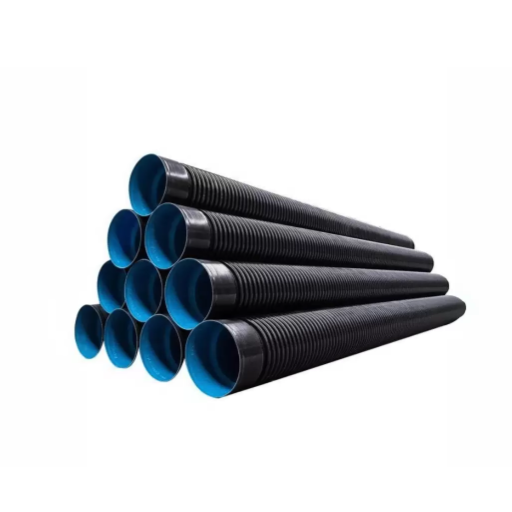
HDPE vs. iron pipe wall thickness: What’s the difference?
The differences in wall thickness of HDPE and iron pipes are mainly the materials’ properties and performance needs. With a greater wall-to-diameter ratio defined as SDR, HDPE pipes rely on flexibility and lower strength compared to iron in withstanding internal pressures. The pipes must also have thicker walls due to flexing under internal pressure. As a case in point, an HDPE pipe with an SDR of 11 can withstand the pressure of 160 psi. This depends on the specific resin grade and prevailing operational conditions.
On the other hand, iron pipes possess a high mechanical strength, which enables them to handle greater pressure with thinner pipes. A good example is ductile iron pipes in a pressure class of 350 psi, which have thinner pipe walls than HDPE pipes set for lower pressure ratings. Iron pipes potentially need extra protective linings to avert corrosion, unlike HDPE pipes, which do not need it owing to their strong resistance to biological and chemical degradation.
The strengths and flexibility of HDPE pipes coupled with their corrosion resistance and ease of installation enable them to compensate for lower material strength using increased wall thickness. On the contrary, the strength of iron pipes enables then to use a thinner wall, but will need protection from corrosion for durability.
How does HDPE wall thickness affect pipe weight compared to other materials?
The weight of a pipe increases with its HDPE wall thickness as the density of materials in its structure increases. While this added wall thickness causes the pipe to be heavier, it is still light when compared to a steel or iron pipe. An SDR 11 HDPE pipe will surpass the weight of an SDR 17 pipe with the same diameter for the simple reason that the thickness of the walls is much higher in SDR 11. Another factor is that HDPE pipes have a much lower density compared to traditional metal pipes, sitting at 0.93-0.97 g/cm³.
- Wall Thickness (t): Determined by the SDR ratio. A higher SDR ratio indicates thinner walls.
- Material Density (ρ): HDPE has a density of around 0.93-0.97 g/cm³ in comparison to iron or steel which is between 7.85 and 8.05 g/cm³.
- Tensile Strength: The tensile strength of HDPE is 20 to 37 MPa while steel is 250 to 550 MPa.
Although thicker HDPE walls do increase weight to some extent, the material can be advantageous in cases where piping is needed that is both lightweight and corrosion resistant, however using thinner HDPE walls remain applicable.
What are the common misconceptions about HDPE pipe wall thickness?

Is thicker always better for HDPE pipes?
No, thicker walls of HDPE pipes is not always better. While an increased wall thickness improves the pipe’s strength and pressure rating it also increases the weight of the pipe and the material cost. The wall thickness appropriateness depends on the specific application, and the operating conditions.
- Pressure Rating (PN): Increases in thickness improve the wall pressure rating, but going beyond operational parameters can lead to waste material and expenses.
- Flow Capacity: Due to the reduced internal diameter, the thicker walls may reduce the flow capacity. The wall needs to be sized correctly to fulfill the strength and flow requirements.
- Material Efficiency: Overly thick Walls may not be suitable for use in low-pressure or non-pressurized systems where thinner walls suffice.
- Flexibility: The flexibility which is one of the advantages that HDPE pipes offer, is reduced with increased wall thickness, which can limit the installation in difficult terrain.
Considering these aspects as per the requirements of the project is effective in guaranteeing the most appropriate pipe arrangement without unnecessarily complicating the system.
How does wall thickness affect the inside diameter (ID) of HDPE pipes?
The flow area of a HDPE pipe is negatively influenced by the wall thickness as it directly restricts the internal diameter (ID) of the pipe.
- Standard Dimension Ratio (SDR): A key measure is the ratio of pipe OD to wall thickness for SD. The lower the SDR, the thicker the walls, resulting in a lower ID, which shows higher pressure containment.
- Pressure Rating (PN): A lower SDR indicates thick walls, which also correlate to increased pressure rating but come with a smaller ID, which negatively affects flow rates and hydraulic efficiency.
- Flow Capacity: Reduced ID is observed due to thicker walls, and flow capacity is directly proportional to volumetric flow rate, resulting in slow flow, by the Hagen-Poiseuille equation governing laminar flow.
- Specific Project Requirements: High pressure applications might benefit from thicker walls even with lowered flow area, but low pressure zones can utilize thinner walls to optimize ID while saving on materials.
Taking these technical details into consideration facilitates an effective optimization of the trade-off between wall thickness, ID, and requirements pertaining to specific applications.
How does HDPE pipe wall thickness impact bypass and line stopping operations?

What considerations are needed for bypass projects with different wall thicknesses?
When managing bypass projects with varying wall thicknesses, I drill deeper, considering several critical issues that need attention for operational success while ensuring project requirements are met. For instance, higher wall structures could require increased drilling torque and specialized tools to deal with the added structural resistance. Thinner walls, on the other hand, are far easier to breach but pose a danger to the structural integrity, especially when in a high-pressure scenario.
- Compatibility of Drilling Equipment: Increased wall structures necessitate greater strength cutters in addition to torque equipment to achieve precise entry points without sacrificing efficiency when it comes to thicker walls.
- Structural Integrity: Thinner walls require the greatest attention during bypass operations due to their propensity to deform or collapse under stress.
- Flow Rate Effect: Wall thickness From above, internal diameter is the subject changeable thickness, and understanding the relation of internal diameter to expected volumetric flow is vital in determining bypass capacity.
- Pressure Conditions: The working pressure is the determining parameter of the bypass pipeline funnels, therefore, in fixing the required safety margins for wall thickness there is a need to set approximate limits what level of operational pressure they should match or supersede.
By balancing these factors against project-specific needs, I can design more efficient and technically sound bypass operations.
How does wall thickness affect line stopping techniques in the water industry?
The thickness of the wall is a key factor to consider as it determines the practicality and efficiency of the line stopping techniques within the water sector.
- Sealing Performance: Performance of sealing is thicker walls create a more ample surface for the sealing components of the line stop, therefore, greater reliability, and leak prevention. On the other hand, thinner walls may necessitate some additional leakage control.
- Tooling and Equipment Adaptation: Wall thickness determines the required type and specification of equipment, for example, cutter size and pressure rated fittings, that must be used at a line stop in order for it to be safe and effective.
- Structural Support: For some of the thinner pipes, there is a need to first help prevent deformation by external bracing or the use of specially designed sealing heads to help manage the risk.
- Pressure Management: The operational and test pressures of the pipeline set the boundary of minimum wall thickness in order to accept the forces working on the wall during the stopping process. Here, gaps between pressures could risk the safety and prolonged life of the entire system.
- Flow Dynamics: To maintain flow control while performing a line stop, wall thickness must therefore accommodate the reduction of Internal Diameter while preventing excessive reduction in the water flow and turbulence.
By analyzing these factors, I can make certain that line stopping procedures fit with the current pipeline requirements and safety and efficiency objectives are maximally realized.
Reference sources
Frequently Asked Questions (FAQs)
Q: What is an HDPE pipe, and why is wall thickness important?
A: HDPE (High-Density Polyethylene) pipe is a durable and flexible product used in various applications. Wall thickness is crucial as it determines the pipe’s strength, pressure rating, and longevity. Understanding wall thickness helps in selecting the right HDPE pipe for your specific business needs.
Q: How can I find the wall thickness of HDPE pipe using the IPS size chart?
A: To find the wall thickness of HDPE pipe, follow these steps: 1) Locate the pipe’s nominal size on the IPS (Iron Pipe Size) chart. 2) Identify the SDR (Standard Dimension Ratio) or pressure rating. 3) Cross-reference these values to determine the corresponding wall thickness. The HDPE pipe size chart provides this information for easy reference.
Q: What is PE4710, and how does it relate to HDPE pipe wall thickness?
A: PE4710 is a high-performance grade of HDPE resin used in pipe manufacturing. It offers excellent strength and durability, allowing for thinner wall thicknesses while maintaining high pressure ratings. This results in larger internal diameters and improved flow characteristics compared to pipes made with other HDPE grades.
Q: How do I choose the right wall thickness for my HDPE pipe application?
A: To select the appropriate wall thickness, consider factors such as operating pressure, temperature, installation method, and external loads. Consult the HDPE pipe size chart and follow industry standards or consult with experts like Petersen Products to ensure you choose the correct wall thickness for your specific application.
Q: How does wall thickness affect the pressure rating of HDPE pipes?
A: Wall thickness directly impacts the pressure rating of HDPE pipes. Thicker walls can withstand higher internal pressures, while thinner walls are suitable for lower pressure applications. The relationship between wall thickness and pressure rating is typically expressed as the SDR (Standard Dimension Ratio). Lower SDR values indicate thicker walls and higher pressure ratings.
Q: Can I use HDPE pipe wall thickness to determine if a pipe will block or resist flow?
A: While wall thickness doesn’t directly determine if a pipe will block or resist flow, it does affect the internal diameter of the pipe. Thicker walls reduce the internal diameter, which can impact flow rates. However, HDPE pipes generally have smooth interior surfaces that minimize friction and reduce the likelihood of blockages compared to other pipe materials.
Q: How do environmental factors influence the choice of HDPE pipe wall thickness?
A: Environmental factors such as temperature, UV exposure, and chemical resistance can affect the required wall thickness of HDPE pipes. Extreme temperatures may necessitate thicker walls, while pipes exposed to sunlight might require UV-resistant additives. Always consider these factors when selecting HDPE pipe wall thickness for your specific application.



